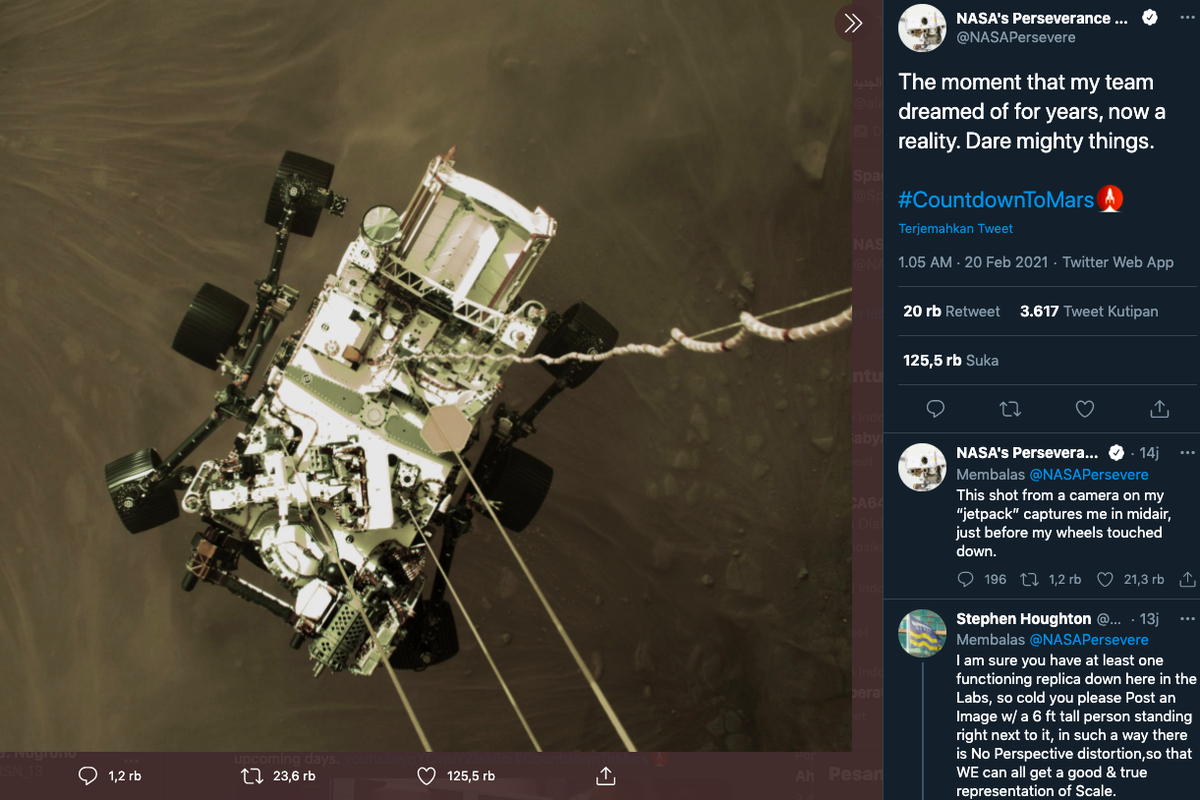
KOMPAS.com – The NASA Perseverance rover Thursday safely landed on Mars and sent a set of color images of the red planet back to the engineers and scientists at mission control in Southern California.
The exploration program website said on Friday, February 19 that the high-resolution color photos came less than a day after touching down. The hazard cameras showed on the front and rear of the vehicle.
A health report also indicated that everything seemed to be working as it should.
Also read: Indonesia Readies 18 Million Covid-19 Vaccines for Second Mass Vaccination
Perseverance was able to capture a video of its descent. The footage is still in the process of being sent to Earth via relays over other spacecraft, but a still from the video was already received on Friday.
'Awestruck'
Scientists and engineers working on the mission reacted with excitement when they saw the first images of Mars sent by the Perseverance rover.
"This is something that we've never seen before,'' flight system engineer Aaron Stehura told reporters.
Also read: Indonesia to Get 140 Million Doses of Sinovac Covid-19 Bulk Vaccine Soon
"It was stunning, and the team was awestruck. There's just a feeling of victory that we were able to capture these and share it with the world," he said.
Pauline Hwang, strategic mission manager for surface operations, described the situation when the first photos came through: "The team went wild."
"We were just kind of like on cloud nine ... this weird dreamlike state, we can't actually believe this is what we're seeing," she said.
Next steps
The mast of the rover was expected to be raised on Saturday allowing several other cameras to start recording images.
The navigation cameras, used for driving, are located close to two science cameras — a zoomable Mastcam-Z and a laser instrument called SuperCam.
Also read: Indonesian Economy Sinks to A Record Low of Minus 2.07%
The cameras allow the scientists and engineers to get an even better view of our neighboring planet than previous expeditions, but as they explained over a live broadcast, the signals sent from the control team to the rover can take between five and 20 minutes.
That means that the team has to send a series of instructions to Perseverance at the beginning of the day and wait a while to see what happens.
The mission aims to collect rock samples which will be collected by subsequent missions in cooperation with the European Space Agency (ESA).
It is hoped that Perseverance will pave the way for future human exploration of the red planet.
Simak breaking news dan berita pilihan kami langsung di ponselmu. Pilih saluran andalanmu akses berita Kompas.com WhatsApp Channel : https://www.whatsapp.com/channel/0029VaFPbedBPzjZrk13HO3D. Pastikan kamu sudah install aplikasi WhatsApp ya.
































